Solid Waste Management Workshop, Kinnaur
Community-led Total Sanitation Training for Solid Waste Management in Kinnaur District, Himachal Pradesh
The Himalayan Conservation and Preservation Society (HCPS) promoted and supported a workshop on Solid Waste Management (SWM) in Kinnaur District in the Indian State of Himachal Pradesh in Western Himalaya. The workshop was organized and facilitated by Landstack in association with the district administration of Kinnaur. Landstack’s work is centered on land governance, environment, and community rights.
The broad theme of the workshop was to address environmental degradation of the Himalayan commons and forests through community-based solid waste management approaches. This participatory five-day training workshop brought together multiple levels of participants from Kinnaur, including representatives from Gram Panchayats, district and state officials, and social activists.
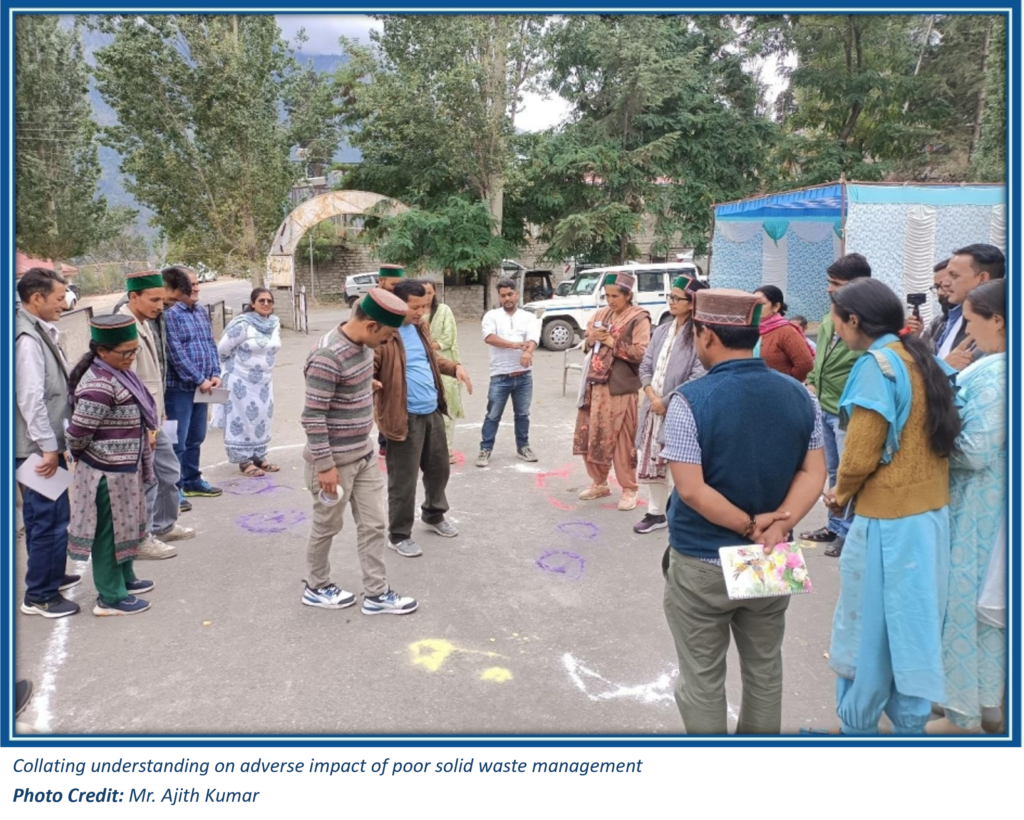
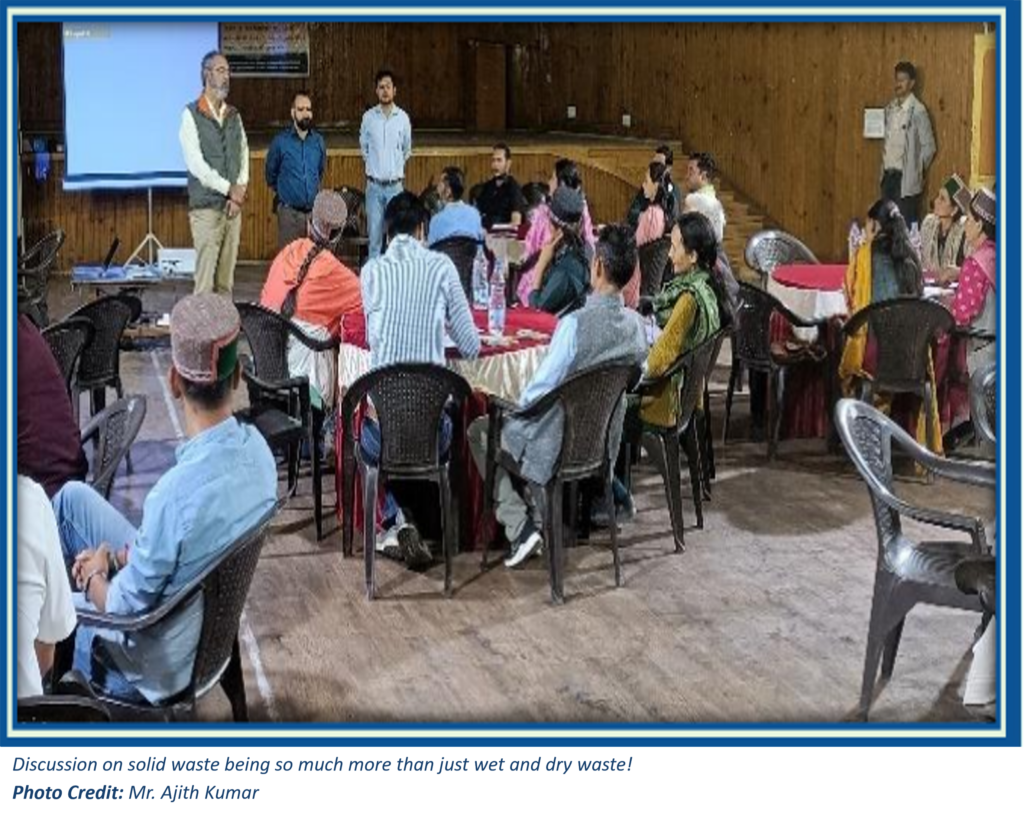
Workshop Objectives
The objective of this workshop was to raise awareness about the impacts of waste on Kinnaur’s environment and health. Through participatory engagements, the workshop provided training to identify and implement sustainable and culturally appropriate solutions to reduce environmental contamination, including in waterways. The specific aim of the workshop was to empower Kinnauri participants to address their own problems around waste.
The traditional “Training of Trainers in Community-Led Total Sanitation (CLTS)” approach was used with the aim of helping participants realize that the contamination of shared waterways is a collective community problem.
CLTS approach is an innovative method of empowering and mobilizing communities to own and solve problems related to their sanitation. At the heart of CLTS lies the recognition that merely providing infrastructure does not guarantee the use of that infrastructure, nor will it result in improved sanitation and hygiene. In the contrary, it may create a culture of dependence on subsidies.
CLTS focuses on behavior change needed to ensure real and sustainable improvements by investing in community mobilization instead of only infrastructure. The CLTS process triggers the community’s desire for collective change, motivates people into action and encourages innovation, mutual support, and appropriate local solutions, thus leading to greater ownership and sustainability.
In this workshop, CLTS method was used to analyze Kinnaur’s waste situation and realize the importance of appropriate management of solid waste. Further, participants facilitated a plan to implement their own strategies to achieve safe disposal. In effect, they took charge of implementation and its effective monitoring.
We hope that other communities in the mountains will adopt a similar project to empower themselves in tackling their waste problems.
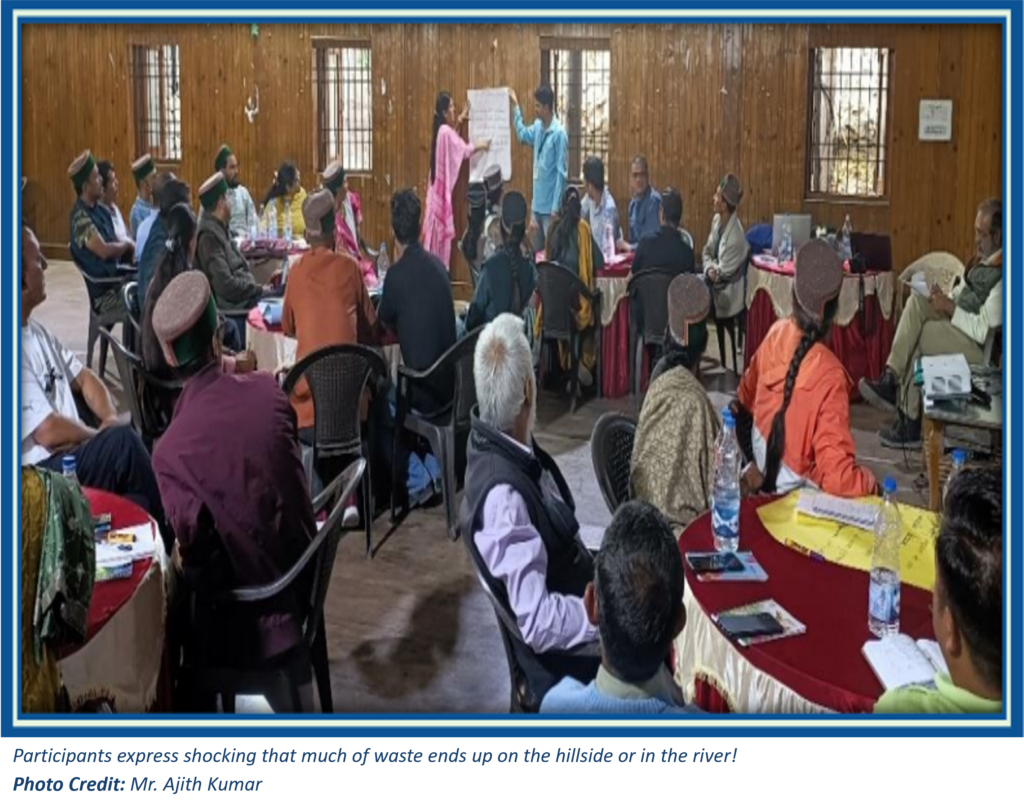
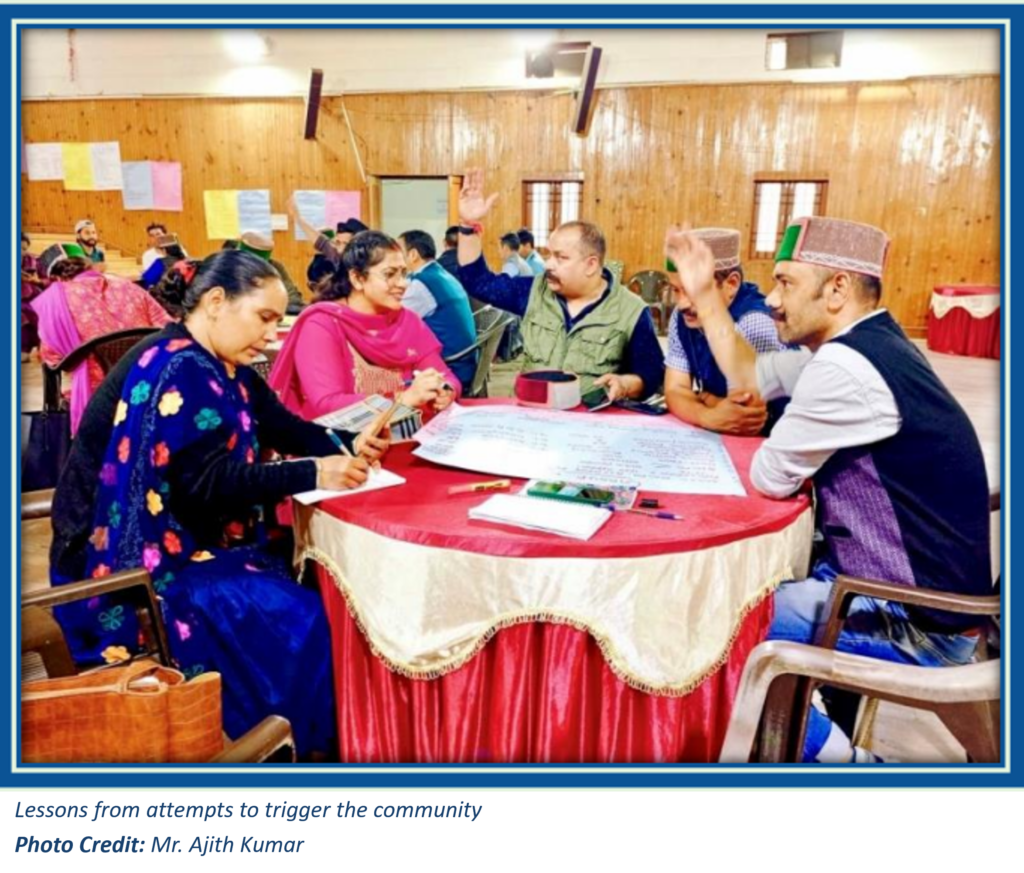
Background on Solid Waste Management
Sustainable solid waste management and sanitation are pressing issues of concern in rural areas of the Indian Himalaya. In the last decade, economic development, urbanization, population growth, and a rapid escalation in mass tourism have placed enormous pressures on sensitive mountain landscapes, contributing to an increase in waste. As consumption patterns change, so too does the production of waste. Safe disposal through appropriate solid waste management is increasingly becoming a major problem faced by rural Himalayan communities such as Kinnaur District. The problem is even greater in areas with tourist influx as is occurring in Kinnaur. Due to its remoteness, mountain topography, and vulnerability to natural disasters and hazards, solid waste management is especially complex and challenging. For these reasons, Kinnaur District is devoid of a proper solid waste management facility. Existing facilities in Kinnaur are inadequate in terms of waste collection, transportation, treatment, and disposal.
Currently, local communities dispose of their waste by either open burning or dumping—usually in waterways or on the sides of cliffs and gorges. Open burning emits toxic pollutants and produces black carbon, which has been linked to the melting of glaciers (Mingle, 2015). Toxic fumes emitted from burning garbage is hazardous for humans and animal health. These fumes are particularly harmful to children and pregnant women. Dumping unsegregated waste pollutes surface and ground waterways, gorges, and forests. The waste is carried out by rivers downstream. The Himalayan mountains are the headwaters of many of the large rivers in Asia. Waste is dumped into waterways where it is carried downstream to larger rivers and ultimately contaminating the oceans. Waste that is disposed of on land is not only visually unappealing (and will eventually repel tourists) but also attracts rodents and carrion, which can spread disease. To reduce this contamination, it is necessary to mitigate the open dumping of waste. But achieving this goal requires awareness raising about the impacts of continuing waste disposal in this manner and providing local communities tools with which to ameliorate this problem.
Sustainable solid waste management and sanitation are issues of collective behavioral change. Until it is treated as a community issue, sustainable outcomes will be unreachable. Mere government funding of infrastructure and slogans will not solve the problem. The attempt has to create a band of passionate SWM leaders and guides who are willing to ignite and sustain the spark to make safe SWM and sanitation a reality in their communities.
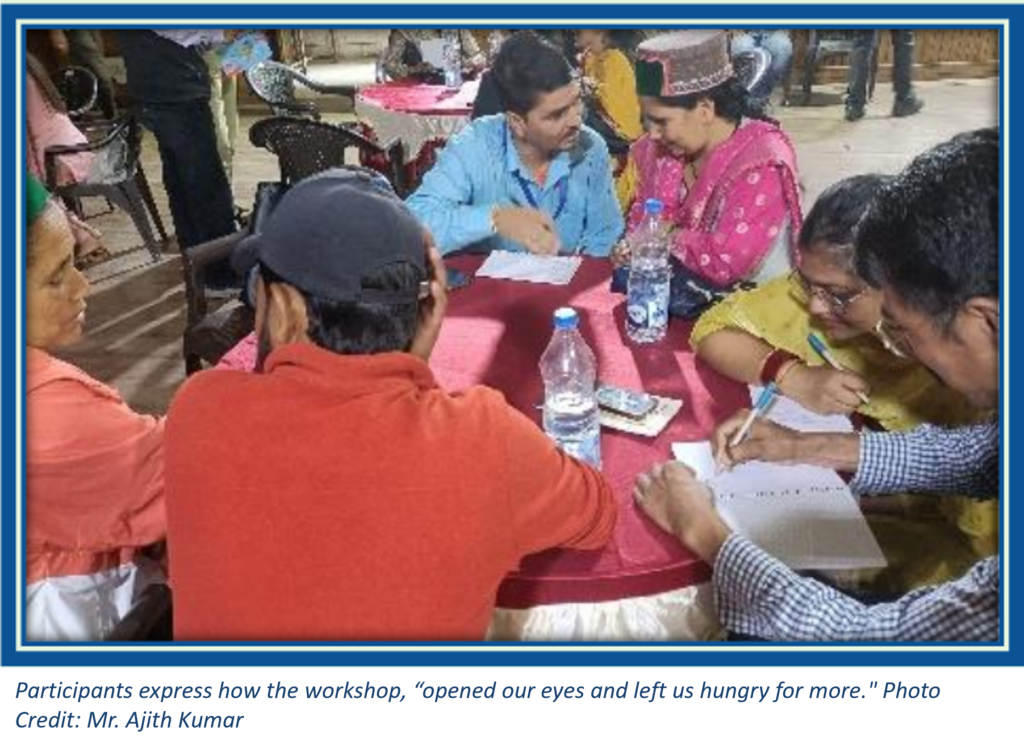
Background on Kinnaur
Since India’s Independence in 1947, Kinnaur has witnessed significant changes in its environment and social organization. Human-environment relations have transformed due to increasing exposure to markets, unplanned development, and environmental change. Similar changes have also occurred elsewhere throughout the Himalaya where market-based agriculture has replaced traditional and diversified subsistence agricultural systems (Sati, 2014; Singh et al., 2011).
Kinnauris, a tribal population, were traditionally subsistence agro-pastoralists who conducted cross-border trade with Tibet. Following India’s Independence, remote hill areas in the Western Himalaya gradually adopted horticulture, apples, for export. After the Indo-China war in 1962, the Indian government constructed a strategic highway across Kinnaur to better protect its border region, integrating the area into the wider economy.
An unplanned tourism industry is growing, much of it based on the prospects of future tourism (Bennike, 2020, p. 2). The last decade has seen a steady increase in tourism in Kinnaur. Since pandemic restrictions were lifted, there has been an increase in the number of tourists visiting the region. This transformation process of mass tourism to the area is ongoing and contributing to the generation of a great amount of waste.
Citation
Bennike, R. B. (2020). Himalayan futures: tourism and the anticipation of development. Canadian Journal of Development Studies / Revue canadienne d’études du développement, 41(1), 110-126. https://doi.org/10.1080/02255189.2020.1700786
Mingle, J. (2015). Fire and ice : soot, solidarity, and survival on the roof of the world. St. Martin Press.
Sati, V. P. (Ed.). (2014). Towards Sustainable Livelihoods and Ecosystems in Mountain Regions. Springer International Publishing. https://doi.org/10.1007/978-3-319-03533-8.
Singh, S. P., Bassignana-Khadka, I., Karky, B. S., & Sharma, E. (2011). Climate change in the Hindu Kush-Himalayas: The state of current knowledge. ICIMOD. www.icimod.org/publications
